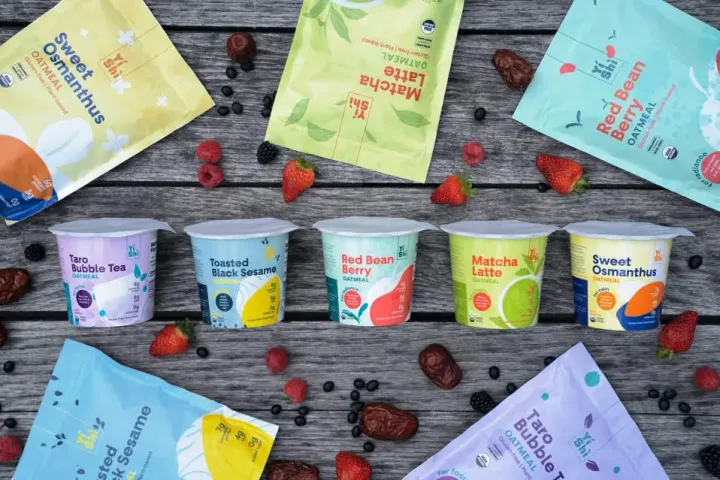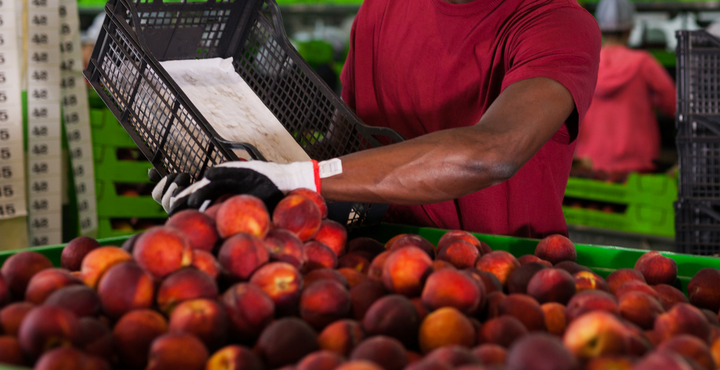E-commerce Food Sales: How to Sell Perishable Products Online
Discover the essentials of selling perishable food products online, from choosing the ideal sales platforms to handling packaging, shipping, and compliance with confidence.

Selling perishable food products online can be a profitable business venture, but it also poses unique challenges. Unlike non-perishable items, perishable goods require special handling, packaging, and shipping to ensure they arrive at your customer's doorstep fresh and safe to consume. We'll explore the essentials of selling perishable products online and explain why Freshly Inventory is an excellent tool to help grow your Shopify store.
Selecting the ideal sales platforms and channels
Choosing the right platform to sell your perishable products is a critical decision. Shopify is a popular choice due to its robust features and ease of use. In fact, research from Statista revealed that Shopify's market share among e-commerce platforms was 31% in 2021. Here are some reasons why Shopify is an excellent choice for selling perishable products online:
- High-quality online store themes: Shopify offers a wide range of professionally designed themes specifically tailored for food businesses, making it easier to create an attractive and user-friendly online store.
- Extensive app ecosystem: Shopify boasts a vast library of apps that support various aspects of your food business, from customizing local pickup and delivery options to managing subscriptions, expiry dates, and customer loyalty programs.
- Robust marketing tools: Beyond platforms, promoting your brand through social channels is essential for driving traffic to your store. Utilize platforms like Facebook, Instagram, and TikTok, or leverage messaging tools like WhatsApp for effective communication and promotion. Social media platforms have a significant impact on consumers' purchasing decisions, with 76% of online shoppers saying social media helps them decide what to buy.
Integrating your Shopify store with online marketplaces like Amazon or Etsy can also expand your sales reach. In addition to online marketplaces, consider entering the wholesale market to sell your perishable products in bulk to retailers, restaurants, or other businesses. Wholesale can provide an additional revenue stream and help you establish long-term relationships with clients.
Fulfillment
You can choose to perform the steps for fulfillment of orders, yourself, managed directly by you and/or your team. This includes packaging, labeling, and shipping. However, outsourcing this part of your operation by partnering with a third-party logistics (3PL) provider that specializes in e-commerce fulfillment is also a popular option, freeing you up to concentrate on other aspects of the business.
Each option has its pros and cons, so it's essential to research and choose the option that works best for your business. However you choose to implement fulfillment for your business, it’s essential to get packaging, labeling, and shipping right.
Storage
Maintaining the quality and safety of your perishable food products is a top priority, and proper storage plays a pivotal role in achieving that. Whether you manage storage in-house or partner with a third-party logistics provider, ensuring the right conditions is essential to delivering optimal freshness to your customers.
Depending on the nature of your products, be mindful of specific temperature and humidity requirements. It's crucial to have a clean, dry, and contaminant-free storage environment that keeps pests and vermin at bay.
Packaging
Investing in quality packaging is essential for any food and beverage business, as it plays a crucial role in preserving product freshness, ensuring food safety, and enhancing customer experience.
- Preserving freshness and prolonging shelf life: Effective packaging helps maintain the quality of perishable food and beverages by protecting them from environmental factors such as moisture, light, and temperature fluctuations. This helps extend the shelf life of your products, reduce spoilage, and minimize waste.
- Ensuring food safety: Quality packaging materials and proper sealing techniques are critical for preventing contamination and maintaining food safety. This not only helps meet regulatory requirements but also builds trust with your customers, who expect to receive products that are safe to consume.
- Enhancing customer experience: Visually appealing and functional packaging can make a significant impact on customers' perception of your brand. Creative and innovative packaging designs can set your products apart from competitors, making them more memorable and enticing to potential buyers.
- Environmental sustainability: Eco-friendly packaging options, such as biodegradable or recyclable materials, can reduce your business's environmental impact and cater to the growing consumer demand for sustainable products.
- Supporting brand identity: Custom packaging that reflects your brand's identity, values, and story can strengthen your brand image and create a cohesive customer experience. This can lead to increased brand recognition, customer loyalty, and repeat purchases.
- Facilitating shipping and handling: Quality packaging is essential for protecting your products during transit, ensuring they arrive at their destination in perfect condition. Proper packaging can reduce the risk of damage, spoilage, or leakage, which can save your business time and money in the long run.
Labeling
Ensuring clear and accurate labeling for your products is vital for various reasons. Not only does it help you meet regulatory requirements, but it also contributes to building consumer trust and maintaining a positive brand image. Here's why prioritizing proper labeling is crucial for your business:
- Regulatory compliance: Adhering to food labeling regulations, such as those outlined by the FDA in the United States or other governing bodies in different countries, is a legal requirement. Non-compliance can lead to fines, product recalls, or even legal action, resulting in financial loss and damage to your business's reputation.
- Consumer safety: Providing accurate information on labels, including ingredients, nutritional content, allergen warnings, and storage instructions, is essential for protecting your customers' health and safety. This helps them make informed choices about the products they consume, particularly if they have specific dietary restrictions or allergies.
- Customer trust and brand loyalty: Transparent and accurate labeling demonstrates your commitment to providing high-quality and safe products. This transparency helps build trust with customers, who are more likely to become loyal to your brand and make repeat purchases.
- Informed purchasing decisions: Detailed product labels enable customers to compare and contrast your offerings with those of your competitors. Accurate labeling can help your products stand out in the market, particularly if they have unique selling points, such as organic or locally sourced ingredients.
- Market expansion: If you plan to sell your products across international borders, accurate labeling that complies with the destination country's regulations is crucial. This will facilitate smoother market entry and expansion, ensuring that your products reach a broader audience without legal complications.
Shipping
Shipping food and beverage products to your customers comes with a unique set of challenges. As a merchant, you need to ensure that your products arrive fresh, safe, and in excellent condition. Here are the basic considerations you need to keep in mind when sending perishable items to your customers:
- Shipping carrier and service: Select a reliable shipping carrier that can deliver your products within the desired timeframe. Familiarize yourself with the carrier's policies and procedures, and establish a service level agreement (SLA) to ensure they meet your expectations. Opt for faster shipping methods, such as overnight or express services, to minimize transit time for perishable items.
- Temperature control: Perishable items, especially those that need to be refrigerated or frozen, require temperature-controlled shipping solutions. Utilize insulated packaging materials, ice packs, or dry ice to maintain the appropriate temperature during transit. Coordinate with your shipping carrier to confirm that they can accommodate temperature-sensitive shipments.
- Packaging: Invest in high-quality packaging materials that are designed to keep your products fresh, protect them from damage, and maintain the required temperature throughout the shipping process. This may include insulated shipping containers, cushioning materials, and proper sealing techniques to prevent leaks or contamination.
- Local delivery and pickup options: Consider offering local delivery or in-store pickup options to customers in your immediate vicinity. This can help you maintain better control over the quality and freshness of your products while providing a convenient service for your customers.
Regulation and Compliance
As a food and beverage merchant, adhering to local and national regulations is not just a requirement, but a responsibility to ensure the safety and well-being of your customers. Whether you are selling within the United States or internationally, compliance with regulations such as The Food Safety Modernization Act (FSMA) is crucial to prevent foodborne illnesses and maintaining a reputable business.
Start by familiarizing yourself with the specific licenses or permits required to sell food products online in your area. These requirements may vary depending on the product type and location. Food safety is a primary concern, with legislation like FSMA outlining the necessary preventive controls, traceability measures, and food safety plans.
If you're shipping products across state lines or international borders, you may need to comply with additional regulations and provide supplementary information on product labels. This may include details about the product's origin, ingredients, nutritional facts, and allergen warnings, as well as any storage or handling instructions.
By investing time and resources in understanding and adhering to regulatory requirements, you can ensure your business operates within the confines of the law, ultimately safeguarding your customers and maintaining a strong brand reputation.
Inventory Management
Proper inventory management ensures that you have the right amount of stock to meet demand without overstocking, reducing the risk of spoilage and waste.
While Shopify's built-in inventory management feature offers basic functionalities, third-party tools or add-ons can provide a more comprehensive solution tailored to your specific needs. Freshly Inventory, for example, is a dedicated Shopify add-on designed to expertly manage inventory, track stock levels, monitor expiry dates, and trace lot codes, ultimately optimizing order fulfillment. By investing in a robust inventory management system, you can minimize losses, improve efficiency, and boost customer satisfaction.
Traceability
Implementing traceability might seem overwhelming, especially for new food & beverage businesses. However, breaking the process down into manageable steps will help you establish a robust traceability system that ensures compliance and customer satisfaction. Here's a guide on where to start:
- Understand the regulations: Familiarize yourself with the relevant food safety regulations and traceability requirements, such as the Food Safety Modernization Act (FSMA) in the US. Ensure you have a clear understanding of your responsibilities as a food and beverage business owner.
- Identify critical tracking points: Map your supply chain and identify the critical tracking points where information needs to be captured. These points could include receiving raw materials, production stages, packaging, and shipping.
- Choose a traceability method: Determine the most suitable traceability method for your business, such as barcodes or QR codes. Ensure that the method is compatible with industry standards and can be easily integrated into your existing systems.
- Implement traceability software: Invest in a traceability solution, such as Freshly Inventory, that can streamline the process of capturing, storing, and analyzing traceability data. This will help you effectively track your products throughout the supply chain and provide valuable insights for informed decision-making.
- Train your team: Educate your team on the importance of traceability and provide them with the necessary training to ensure they can effectively use the traceability system. Regular training sessions will ensure everyone is on the same page and can contribute to maintaining a high level of food safety.
- Monitor and review: Regularly monitor the effectiveness of your traceability system and make adjustments as needed. Continuously reviewing your processes will help you identify areas for improvement and ensure that your traceability system remains robust and reliable.
Better batch tracking and traceability with Freshly Inventory
Running a thriving online perishable food business is an exciting adventure that requires strategic planning and precision. Freshly Inventory, seamlessly integrated with your Shopify store, brings a whole new level of traceability benefits tailored specifically for e-commerce food sales.
With Freshly Inventory on your side, you'll confidently stay on top of regulatory compliance while swiftly identifying and addressing any quality or safety challenges that may come your way. More than just a tool, Freshly Inventory empowers your brand to foster genuine customer trust by embracing transparency and accountability.


